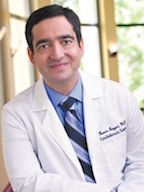Heart Transplant
A heart transplant is a surgery to remove a person's diseased heart and replace it with a healthy heart from a deceased donor. Most heart transplants are done on patients who have end-stage heart failure.
Heart failure is a condition in which the heart is damaged or weak. As a result, it can't pump enough blood to meet the body's needs. "End-stage" means the condition is so severe that all treatments, other than a heart transplant, have failed.
Overview
Heart transplants are done as a life-saving measure for end-stage heart failure.
Because donor hearts are in short supply, patients who need heart transplants go through a careful selection process. They must be sick enough to need a new heart, yet healthy enough to receive it.
Survival rates for people receiving heart transplants have improved, especially in the first year after the transplant.
About 88 percent of patients survive the first year after transplant surgery, and 75 percent survive for 5 years. The 10-year survival rate is about 56 percent.
After the surgery, most heart transplant patients can return to their normal levels of activity. However, less than 30 percent return to work for many different reasons.
The Heart Transplant Process
The heart transplant process starts when doctors refer a patient who has end-stage heart failure to a heart transplant center.
Staff members at the center assess whether the patient is eligible for the surgery. If the patient is eligible, he or she is placed on a waiting list for a donor heart.
Heart transplant surgery is done in a hospital when a suitable donor heart is found. After the transplant, the patient is started on a lifelong health care plan. The plan involves multiple medicines and frequent medical checkups.
Who Needs a Heart Transplant?
Most patients referred to heart transplant centers have end-stage heart failure. Their heart failure might have been caused by:
- Coronary heart disease.
- Hereditary conditions.
- Viral infections of the heart.
- Damaged heart valves and muscles. (Alcohol, pregnancy, and certain medicines can damage the heart valves and muscles.)
Most patients considered for heart transplants have tried other, less drastic treatments. They also have been hospitalized many times for heart failure.
Who Is Eligible for a Heart Transplant?
The specialists at the heart transplant center will assess whether a patient is eligible for a transplant. Specialists often include a:
- Cardiologist (a doctor who specializes in diagnosing and treating heart problems)
- Cardiovascular surgeon (a doctor who does the transplant surgery)
- Transplant coordinator (a person who arranges aspects of the surgery, such as transportation of the donor heart)
- Social worker
- Dietitian
- Psychiatrist
In general, patients selected for heart transplants have severe end-stage heart failure, but are healthy enough to have the transplant. Heart failure is considered “end stage” when all possible treatments—such as medicines, implanted devices, and surgery—have failed.
Certain conditions and factors make it less likely that a heart transplant will work well. Examples include:
- Advanced age. There is no widely accepted upper age limit for a heart transplant. However, most transplant surgeries are done on patients younger than 70 years old.
- Poor blood circulation throughout the body, including the brain.
- Kidney, lung, or liver diseases that can't be reversed.
- A history of cancer or malignant tumors.
- Inability or unwillingness to follow a lifelong care plan after a transplant.
- Pulmonary hypertension (high blood pressure in the lungs) that can't be reversed.
- Active infection throughout the body.
- Diabetes with end organ damage (damage of major organs).
Patients who have one or more of the above conditions might not be eligible for heart transplant surgery.
What To Expect Before a Heart Transplant
The Heart Transplant Waiting List
Patients who are eligible for a heart transplant are added to a waiting list for a donor heart. This waiting list is part of a national allocation system for donor organs. The Organ Procurement and Transplantation Network (OPTN) runs this system.
OPTN has policies in place to make sure donor hearts are given out fairly. These policies are based on urgency of need, available organs, and the location of the patient who is receiving the heart (the recipient).
Organs are matched for blood type and size of donor and recipient.
The Donor Heart
Guidelines for how a donor heart is selected require that the donor meet the legal requirement for brain death and that the correct consent forms are signed.
Guidelines suggest that the donor should be younger than 65 years old, have little or no history of heart disease or trauma to the chest, and not be exposed to hepatitis or HIV.
The guidelines recommend that the donor heart should not be without blood circulation for more than 4 hours.
Waiting Times
About 3,000 people in the United States are on the waiting list for a heart transplant on any given day. About 2,000 donor hearts are available each year. Wait times vary from days to several months and will depend on a recipient's blood type and condition.
A person might be taken off the list for some time if he or she has a serious medical event, such as a stroke, infection, or kidney failure.
Time spent on the waiting list plays a part in who receives a donor heart. For example, if two patients have equal need, the one who has been waiting longer will likely get the first available donor heart.
Ongoing Medical Treatment
Patients on the waiting list for a donor heart get ongoing treatment for heart failure and other medical conditions.
For example, doctors may treat them for arrhythmias (irregular heartbeats). Arrhythmias can cause sudden cardiac arrest in people who have heart failure.
The doctors at the transplant centers may place implantable cardioverter defibrillators (ICDs) in patients before surgery. ICDs are small devices that are placed in the chest or abdomen. They help control life-threatening arrhythmias.
Another possible treatment for waiting list patients is a ventricular assist device (VAD). A VAD is a mechanical pump that helps support heart function and blood flow.
Routine outpatient care for waiting list patients may include frequent exercise testing, testing the strength of the heartbeat, and right cardiac catheterization (a test to measure blood pressure in the right side of the heart).
You also might start a cardiac rehabilitation (rehab) program. Cardiac rehab is a medically supervised program that helps improve the health and well-being of people who have heart problems.
The program can help improve your physical condition before the transplant. Also, you will learn the types of exercises used in the program, which will help you take part in cardiac rehab after the transplant.
Contact With the Transplant Center During the Wait
Patients on the waiting list often are in close contact with their transplant centers. Most donor hearts must be transplanted within 4 hours after removal from the donor.
At some heart transplant centers, patients get a pager so the center can contact them at any time. They're asked to tell the transplant center staff if they're going out of town. Patients often need to be prepared to arrive at the hospital within 2 hours of being notified about a donor heart.
Not all patients who are called to the hospital will get a heart transplant. Sometimes, at the last minute, doctors find that a donor heart isn't suitable for a patient. Other times, patients from the waiting list are called to come in as possible backups, in case something happens with the selected recipient.
What To Expect After a Heart Transplant
Staying in the Hospital
The amount of time a heart transplant recipient spends in the hospital varies. Recovery often involves 1 to 2 weeks in the hospital and 3 months of monitoring by the transplant team at the heart transplant center.
Monitoring may include frequent blood tests, lung function tests, EKGs (electrocardiograms), echocardiograms, and biopsies of the heart tissue.
A heart biopsy is a standard test that can show whether your body is rejecting the new heart. This test is often done in the weeks after a transplant.
During a heart biopsy, a tiny grabbing device is inserted into a vein in the neck or groin (upper thigh). The device is threaded through the vein to the right atrium of the new heart to take a small tissue sample. The tissue sample is checked for signs of rejection.
While in the hospital, your health care team may suggest that you start a cardiac rehabilitation (rehab) program. Cardiac rehab is a medically supervised program that helps improve the health and well-being of people who have heart problems.
Cardiac rehab includes counseling, education, and exercise training to help you recover. Rehab may start with a member of the rehab team helping you sit up in a chair or take a few steps. Over time, you'll increase your activity level.
Watching for Signs of Rejection
Your body will regard your new heart as a foreign object. You’ll need medicine to prevent your immune system from attacking the heart.
You and the transplant team will work together to protect the new heart. You’ll watch for signs and symptoms that your body is rejecting the organ. These signs and symptoms include:
- Shortness of breath
- Fever
- Fatigue (tiredness)
- Weight gain (retaining fluid in the body)
- Reduced amounts of urine (problems in the kidneys can cause this sign)
You and the team also will work together to manage the transplant medicines and their side effects, prevent infections, and continue treatment of ongoing medical conditions.
Your doctors may ask you to check your temperature, blood pressure, and pulse when you go home.
Preventing Rejection
You'll need to take medicine to suppress your immune system so that it doesn't reject the new heart. These medicines are called immunosuppressants.
Immunosuppressants are a combination of medicines that are tailored to your situation. Often, they include cyclosporine, tacrolimus, MMF (mycophenolate mofetil), and steroids (such as prednisone).
Your doctors may need to change or adjust your transplant medicines if they aren't working well or if you have too many side effects.
Managing Transplant Medicines and Their Side Effects
You'll have to manage multiple medicines after having a heart transplant. It's helpful to set up a routine for taking medicines at the same time each day and for refilling prescriptions. It's crucial to never run out of medicine. Always using the same pharmacy may help.
Keep a list of all your medicines with you at all times in case of an accident. When traveling, keep extra doses of medicine with you (not packed in your luggage). Bring your medicines with you to all doctor visits.
Side effects from medicines can be serious. Side effects include risk of infection, diabetes, osteoporosis (thinning of the bones), high blood pressure, kidney disease, and cancer—especially lymphoma and skin cancer.
Discuss any side effects of the medicines with your transplant team. Your doctors may change or adjust your medicines if you're having problems. Make sure your doctors know all of the medicines you're taking.
Preventing Infection
Some transplant medicines can increase your risk of infection. You may be asked to watch for signs of infection, including fever, sore throat, cold sores, and flu-like symptoms.
Signs of possible chest or lung infections include shortness of breath, cough, and a change in the color of sputum (spit).
Watching closely for these signs is important because transplant medicines can sometimes mask them. Also, pay close attention to signs of infection at the site of your incision (cut). These signs can include redness, swelling, or drainage.
Ask your doctor what steps you should take to reduce your risk of infection. For example, your doctor may suggest that you avoid contact with animals or crowds of people in the first few months after your transplant.
Regular dental care also is important. Your doctor or dentist may prescribe antibiotics before any dental work to prevent infections.
Pregnancy
Many successful pregnancies have occurred after heart transplant surgeries; however, special care is needed. If you've had a heart transplant, talk with your doctor before planning a pregnancy.
Emotional Issues and Support
Having a heart transplant may cause fear, anxiety, and stress. While you're waiting for a heart transplant, you may worry that you won't live long enough to get a new heart. After surgery, you may feel overwhelmed, depressed, or worried about complications.
All of these feelings are normal for someone going through major heart surgery. Talk about how you feel with your health care team. Talking to a professional counselor also can help.
If you’re very depressed, your doctor may recommend medicines or other treatments that can improve your quality of life.
Joining a patient support group may help you adjust to life after a heart transplant. You can see how other people who have had the surgery have coped with it. Talk with your doctor about local support groups or check with an area medical center.
Support from family and friends also can help relieve stress and anxiety. Let your loved ones know how you feel and what they can do to help you.
What Are the Risks of a Heart Transplant?
Although heart transplant surgery is a life-saving measure, it has many risks. Careful monitoring, treatment, and regular medical care can prevent or help manage some of these risks.
The risks of having a heart transplant include:
- Failure of the donor heart
- Complications from medicines
- Infection
- Cancer
- Problems that arise from not following a lifelong care plan after surgery
Failure of the Donor Heart
Over time, the new heart may fail due to the same reasons that caused the original heart to fail. Failure of the donor heart also can occur if your body rejects the donor heart or if cardiac allograft vasculopathy (CAV) develops. CAV is a blood vessel disease.
Patients who have a heart transplant that fails can be considered for another transplant (called a retransplant).
Primary Graft Dysfunction
The most frequent cause of death in the first 30 days after transplant is primary graft dysfunction. This occurs if the new donor heart fails and isn't able to function.
Factors such as shock or trauma to the donor heart or narrow blood vessels in the recipient's lungs can cause primary graft dysfunction. Doctors may prescribe medicines (for example, inhaled nitric oxide and intravenous nitrates) to treat this condition.
Rejection of the Donor Heart
Rejection is one of the leading causes of death in the first year after transplant. The recipient's immune system sees the new heart as a foreign object and attacks it.
During the first year, heart transplant patients have an average of one to three episodes of rejection. Rejection is most likely to occur within 6 months of the transplant surgery.
Cardiac Allograft Vasculopathy
CAV is a chronic (ongoing) disease in which the walls of the coronary arteries in the new heart become thick, hard, and less stretchy. CAV can destroy blood circulation in the new heart and cause serious damage.
CAV is a leading cause of donor heart failure and death in the years following transplant surgery. CAV can cause heart attack, heart failure, dangerous arrhythmias, and sudden cardiac arrest.
To detect CAV, your doctor may recommend coronary angiography yearly and other tests, such as stress echocardiography or intravascular ultrasound.
Complications From Medicines
Taking daily medicines that stop the immune system from attacking the new heart is crucial, even though the medicines have serious side effects.
Cyclosporine and other medicines can cause kidney damage. Kidney damage affects more than 25 percent of patients in the first year after transplant.
Infection
When the immune system—the body's defense system—is suppressed, the risk of infection increases. Infection is a major cause of hospital admission for heart transplant patients. It also is a leading cause of death in the first year after transplant.
Cancer
Suppressing the immune system leaves patients at risk for cancers and malignancies. Malignancies are a major cause of late death in heart transplant patients.
The most common malignancies are tumors of the skin and lips (patients at highest risk are older, male, and fair-skinned) and malignancies in the lymph system, such as non-Hodgkin's lymphoma.
Other Complications
High blood pressure develops in more than 70 percent of heart transplant patients in the first year after transplant and in nearly 95 percent of patients within 5 years.
High levels of cholesterol and triglycerides in the blood develop in more than 50 percent of heart transplant patients in the first year after transplant and in 84 percent of patients within 5 years.
Osteoporosis can develop or worsen in heart transplant patients. This condition thins and weakens the bones.
Complications From Not Following a Lifelong Care Plan
Not following a lifelong care plan increases the risk of all heart transplant complications. Heart transplant patients are asked to closely follow their doctors' instructions and check their own health status throughout their lives.
Lifelong health care includes taking multiple medicines on a strict schedule, watching for signs and symptoms of complications, going to all medical checkups, and making healthy lifestyle changes (such as quitting smoking).
Links to Other Information About Heart Transplant
NHLBI Resources
- Cardiac Rehabilitation (Health Topics)
- Heart Failure (Health Topics)
- Heart Surgery (Health Topics)
- Ventricular Assist Device (Health Topics)
Non-NHLBI Resources
- Heart Transplant (MedlinePlus)
- Organ Procurement and Transplantation Network (U.S. Department of Health and Human Services)
Clinical Trials
- Children and Clinical Studies
- Clinical Trials (Health Topics)
- Current Research (ClinicalTrials.gov)
- NHLBI Clinical Trials
- NIH Clinical Research Trials and You (National Institutes of Health)
- ResearchMatch(link is external) (funded by the National Institutes of Health)






